EXPLORE KOREA
TRAVEL KOREA WITH HURAM
Korea is a vibrant country filled with wonderful places to see and lots to experience. There are just tons of must-see attractions and to-do activities where visitors could experience. In the Spring, the fresh blooms will surely brightens up the day; bringing joy and lifting up spirits with their astounding natural beauty. Huram has complied travel packages for our patients and their friends and family.
TRAVEL PACKAGES
On our medical tour, patients, if their health conditions permit, can travel and experience the wonderful Korean culture by visiting attractions, attending events, shopping, dining around, and much more!
There are a several must-visit places when you go to Korea. If you don’t see a location that you would like to visit, please contact us and one of our Huram travel representative will be in touch. Korea’s colorful and memorable tour attractions now await you to explore.
Choose a variety of packages to South Korea’s spectacular tourist attractions. (Heart of Seoul, Jeju Island, Busan, Gyeong-ju, and many more tour packages.)
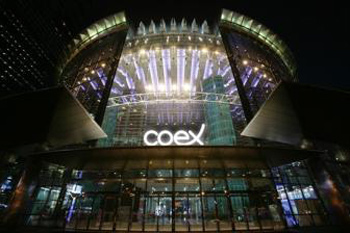
COEX Mall (코엑스몰)
COEX Mall is the largest underground shopping center in Asia. It is located in the basement of the Korea World Trade Center, located in Samseong-dong in the Gangnam-gu area of Seoul. The colossal shopping center stretches from Samseong station (subway line 2) in the south all the way to Bongeunsa temple in the north, and is considered to be the best shopping and entertainment complex in the area.
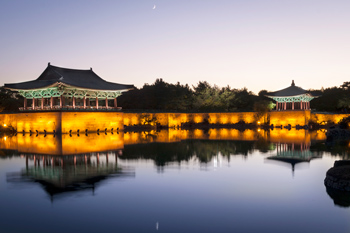
An-ap-ji Pond (안압지)
An-ap-ji Pond: According to the historical records, Anapji Pond was built during the 14th year of King Munmu (in power 661-681 AD) of the Silla Kingdom (57 BC-935 AD). The pond was originally built in Wolseung Fortress (erected in 101 AD during the Silla period), but the fortress was destroyed and now lies in ruins. In 1974, an excavation project revealed large spherical shapes (measuring 200 meters in diameter and 180 meters in height) which indicated that 3 islands had been located in the pond. Thanks to these important findings and existing historical records, Anapji Pond has been restored to nearly its former glory.
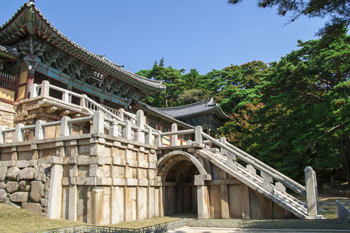
Bulguksa Temple [UNESCO World Heritage] (불국사)
Bulguksa Temple was built in 528 during the Silla Kingdom, in the 15th year of King Beop-Heung’s reign (514-540). The temple was originally called ‘Hwaeom Bulguksa Temple’ or ‘Beopryusa Temple’ and was rebuilt by Kim Dae-Seong (700-774), who started building the temple in 751 during the reign of King Gyeong-Deok (in power 742-765) and completed it in 774 during the reign of King Hye-Gong (in power 765-780). Upon completion, the temple’s name was changed to ‘Bulguksa.’
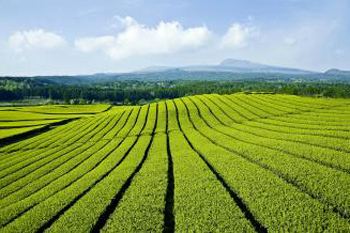
Seogwang Tea Garden (서광다원)
Seogwang Tea Garden, located in Seogwipo-si, Jeju, is known as the most well managed and largest tea plantation in Korea. Here, the tea leaves receive just the right amount of sun for it to be made into the highest quality product. Occupying an area 528,928m², the green field is spread out across the slopes of Seogwangseo-ri, attracting many visitors to the site. The fields didn’t use to be this green though; the ground was rocky and the soil composition wasn’t fertile enough for plants to survive. Seogwang Tea Garden’s transformation from a barren land to a lush green plantation became a good example of successful agriculture in the mountain areas.
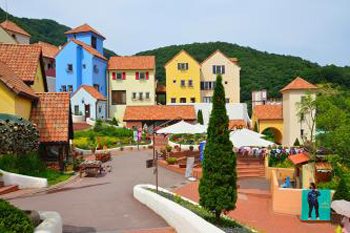
Petite France (쁘띠프랑스)
From its outward appearance, it would appear to be a village that belongs on the Mediterranean coast or in a pastoral area of the Piedmont Alps. This is Petite France, a French cultural village set in the Korean countryside! Petite France serves as both a French cultural village and a youth training facility (Goseong Youth Training Center), and consists of 16 French-style buildings where visitors can lodge and experience French food, clothing, and household culture.
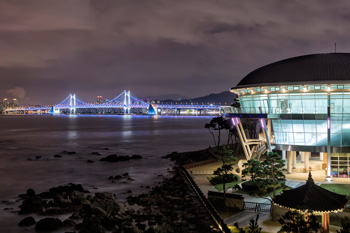
Nurimaru APEC House (누리마루 APEC 하우스)
Located on Dongbaekseom Island, which is noted for its beautiful, natural landscape accented by dense camellia and pine trees, Nurimaru APEC House has been used as a memorial hall and a prestigious international conference hall since the APEC summit meeting. Nurimaru, a 3-story building, is a modernistic expression of “jeongja,” a pavilion in traditional Korean architectural style. Its roof shape symbolizes the ridgeline of Dongbaekseom Island. Its interior design is a visual display of Korea’s creative traditional culture.
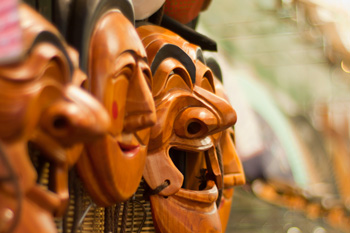
Insadong Antique Alley (인사동)
Insa-dong, located in the heart of the city, is an important place where old but precious and traditional goods are on display. There is one main road in Insa-dong with alleys on each side. Within these alleys are galleries, traditional restaurants, traditional teahouses, and cafes. Here, foreigners can purchase traditional souvenirs at low prices and taste authentic dishes by stepping into a Korean restaurant found on every street corner.
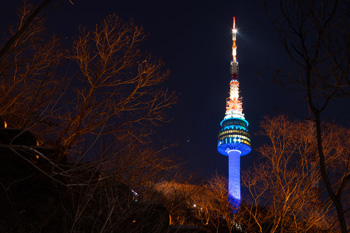
N Seoul Tower
N Seoul Tower opened to the public on October 15, 1980 and has since become a major tourist attraction. The 236.7m Seoul Tower sits atop Namsan Mountain (243m), Seoul Tower offers panoramic views of Seoul and the surrounding areas. The view is so stunning that many consider Seoul Tower the best tower in Asia. Thirty years and countless visitors later, as the structure was renamed ‘N Seoul Tower.’
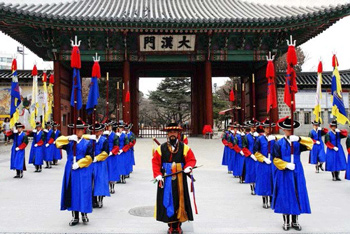
Changing the Guard Ceremony
In ancient times, the royal guards of Joseon Dynasty performed the given task by guarding the Gwanghwamun Gate, the entrance of Gyeongbokgung Palace where the king ruled the country. Since 1469, the ceremony has taken place and its record has been consulted for the present reenactment ceremony. The reenactment of the original ceremony began from 1996. The gate guardsmen serve their sentry, perform the changing of the guards, and hold a parade. The guards’ uniforms, weapons, and accessories as well as their strict ceremonial procedures catch the eyes of passersby, especially foreign tourists, when guardsmen perform the changing of guards in traditional costumes at the main gate of Gyeongbokgung Palace in downtown Seoul. Since it is hard to experience traditional events in such a big city like Seoul, citizens and tourist really enjoy and love it. It takes place everyday except Tuesday.
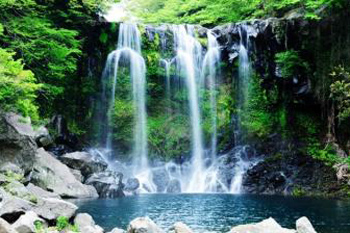
Cheonjiyeon Waterfall (천지연폭포)
Cheonjiyeon Falls, named ‘The pond of God’, consists of 3 parts. Around the falls, a variety of plant life thrives, such as the rare ‘solipnan’ reeds. To the east, there is a cave where cold water pours from the ceiling to create a waterfall. The water from the first waterfall becomes the second and third waterfalls and flows into the sea. In Cheonjeyeon Valley, there is the “Seonimgyo Bridge” (arch bridge that has 7 nymphs carved on the side) and the octagonal “Cheonjeru tower”.
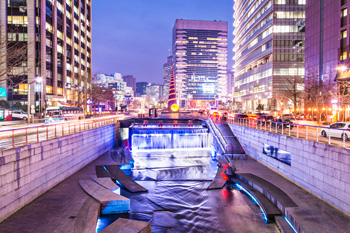
Cheonggyecheon Stream (청계천)
Until it was restored in 2005, Cheonggyecheon Stream existed only as a neglected watercourse hidden by an overpass. Today, it has been transformed into a haven of natural beauty amidst the bustle of city life. Narae Bridge, expressing a butterfly in flight, and Gwanggyo Bridge, symbolizing the harmony of the past and future, are just two of the more than twenty beautiful bridges that cross the stream. The ‘Rhythmic Wall Stream’, lined with fine marble, sculptures, and Korea’s 8th stone building, Palseokdam, adorn the Cheonggyecheon Stream.
